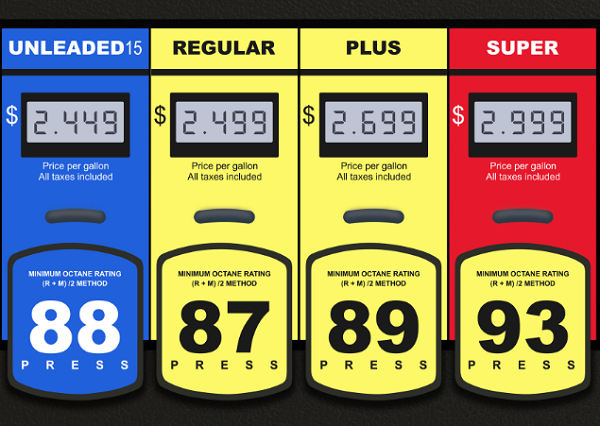Is E15 gas the same as 87?
Most gas stations offer low, mid, and high octane options for gasoline—typically 87, 89, and 91 octane. An octane rating measures the fuel's stability, thereby, its resistance to misfiring or causing what is commonly called "knock." It is used in higher-performance engines that operate with tighter tolerances. You don't want the fuel to combust before the cylinder makes it to the top of its stroke, where it can create the maximum amount of power.

E15 is gasoline. It's 88-octane fuel refined with 85 percent unleaded gas and 15 percent ethanol. E15 has been available through retail distributors since 2012 and, like the more popular E85 (unleaded gas plus between 51 and 83 percent ethanol), it can be used in all flexible-fuel vehicles. However, it is blended primarily for 2001 and newer cars and SUVs.
It contains 5% more ethanol than E10, the most common fuel used in the U.S. E15 is higher in octane – typically 88 octane, while E10 has an octane rating of 87. Retailers are offering E15 as Unleaded 88 to highlight its high octane value.
Cost is the first plus about E15, also called "Unleaded88" at some places where it is sold. It's cheaper (per gallon) than typical unleaded blends, and it works in most 2001-to-present gas-powered pickups. Also, because of its higher octane (than regular 87-octane fuel), E15 reduces engine knock and promotes greater overall efficiency and power.
Of course, environmental impact must be included as one of the pros. Vehicles using ethanol-based fuels as a whole emit less carbon dioxide. However, on the negative side, because ethanol has approximately 5 percent less energy than gas, any noticeable difference in fuel economy with E15 may be lower than it is with unleaded fuel.
);

